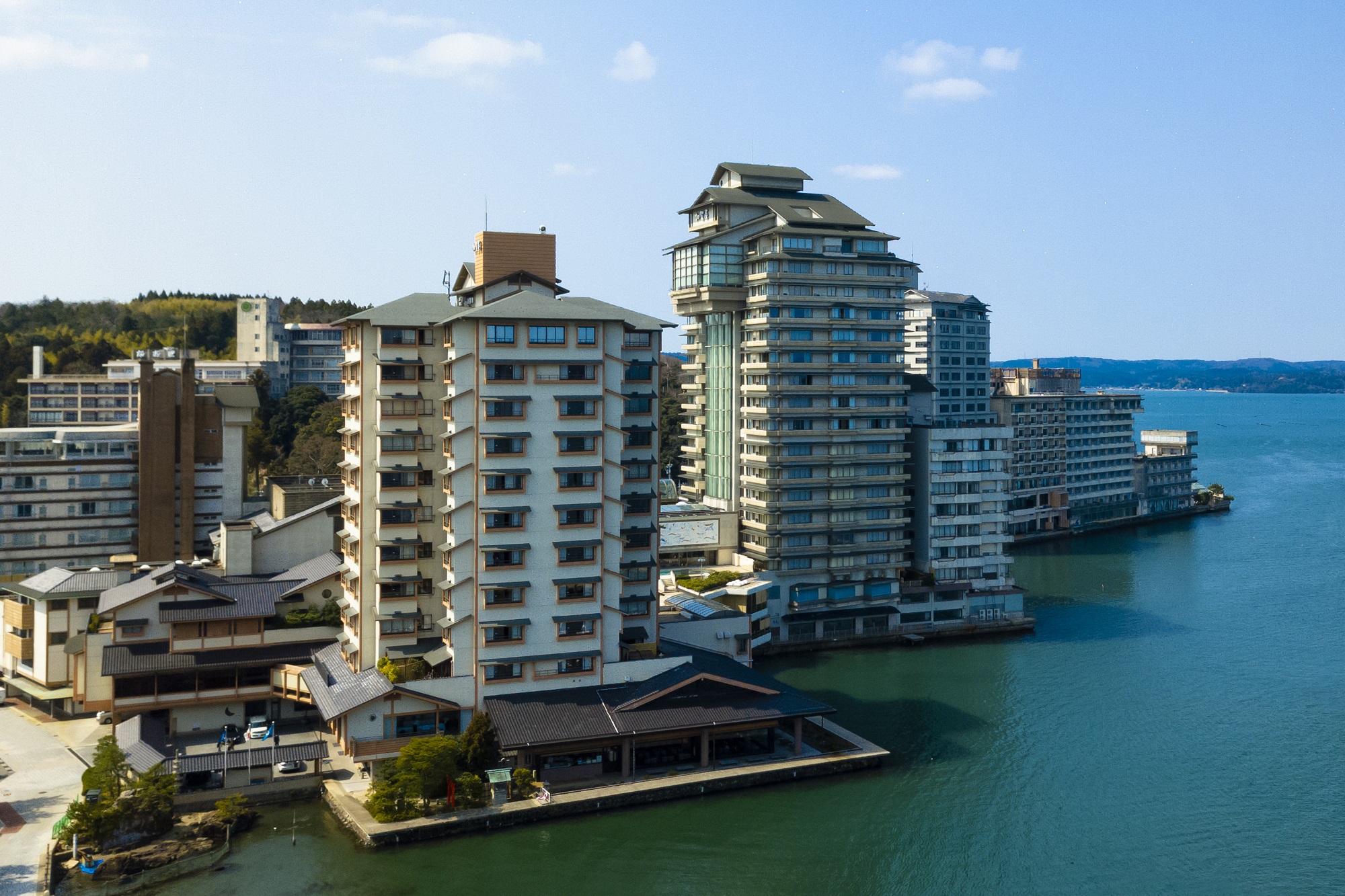Kenrokuen/兼六園(Ishikawa)
About Kenrokuen
Kenrokuen is one of the three most famous gardens in Japan, alongside Okayama Korakuen in Okayama City, Okayama Prefecture, and Mito Kairakuen in Mito City, Ibaraki Prefecture. As one of the most famous highlights of Ishikawa Prefecture, Kenrokuen has been designated a national special place of scenic beauty. As a prominent garden exclusively for the pleasure of daimyo (feudal lords) during the Edo Period (1600/1603-1868), Kenrokuen was created over a prolonged period of time by successive lords of the Kaga domain, and offers picturesque scenery all year round. It is a must-see tourist attraction when visiting Ishikawa Prefecture.

Kenrokuen adopts the "Kaiyu-style" — a type of garden where circulating paths are provided for appreciating features representing lakes, mountains, pavilions, and teahouses, and allowing visitors to stop by whichever one of these they choose in order to enjoy it more. The name "Kenrokuen" (literally "To have all six") comes from the Chinese Song Dynasty poet, Li Guei-nui, who wrote in his "Famous Gardens of Luoyang" about significant gardens in the city of Luoyang at the end of the eleventh century. His descriptions say that these gardens had six contrasting features: "spaciousness" versus "privacy," "artifice" versus "antiquity," "watercourses," versus "panoramas." Kenrokuen has received the highest rating of three stars in the Michelin Green Guide Japan, and is a popular tourist destination even attracting many visitors from abroad.
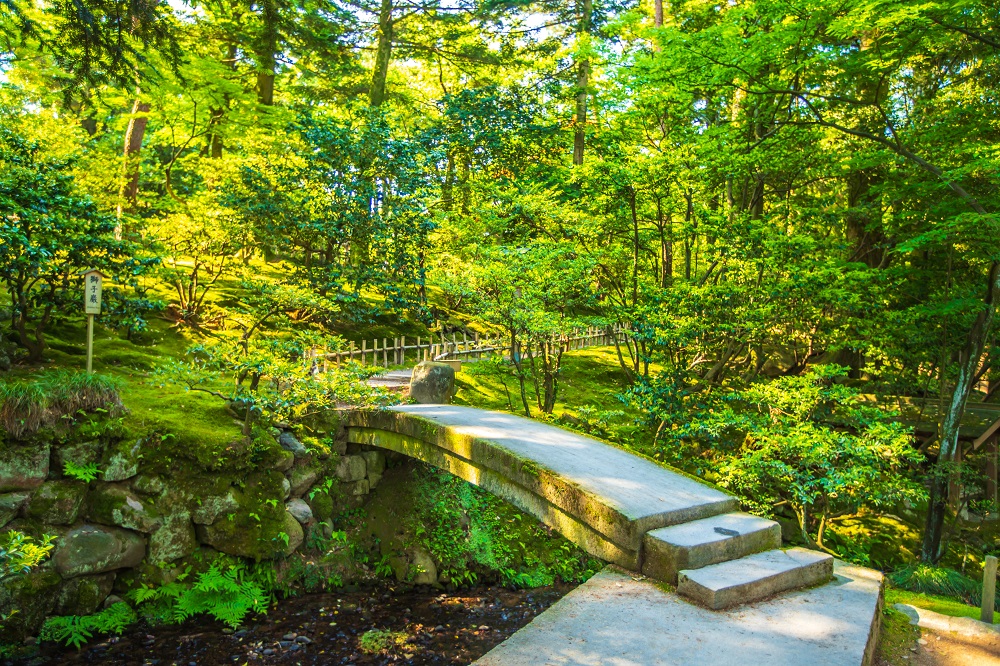
At Kenrokuen, visitors can enjoy beautiful seasonal scenery such as cherry blossoms in spring, fresh greenery in early summer, autumn leaves in fall, and "Yuki-tsuri" trees (trees protected from snow) in winter. The park has been selected as one of the 100 best cherry blossom viewing spots, and there are many vantage points within the park where visitors can appreciate the cherry blossoms in all their glory, such as Sakuragaoka and Renchimon-dori. The "Kenrokuen Chrysanthemum Cherry Tree," a rare variety with more than 300 petals on each flower, is a particularly impressive sight to behold. In winter, visitors can catch a firsthand glimpse of "Yuki-tsuri," a technique to preserve trees and shrubs from heavy snow. A rope is suspended from a pole in the center of the tree and stretched taut from the branches in a radial pattern, making it appear as though the tree is holding an umbrella, thus creating yet another poetic feature of Kenrokuen Garden — but this time exclusive to winter. The yuki-tsuri of the Karasaki Pine Tree, which boasts the largest branches in the park, is particularly spectacular.
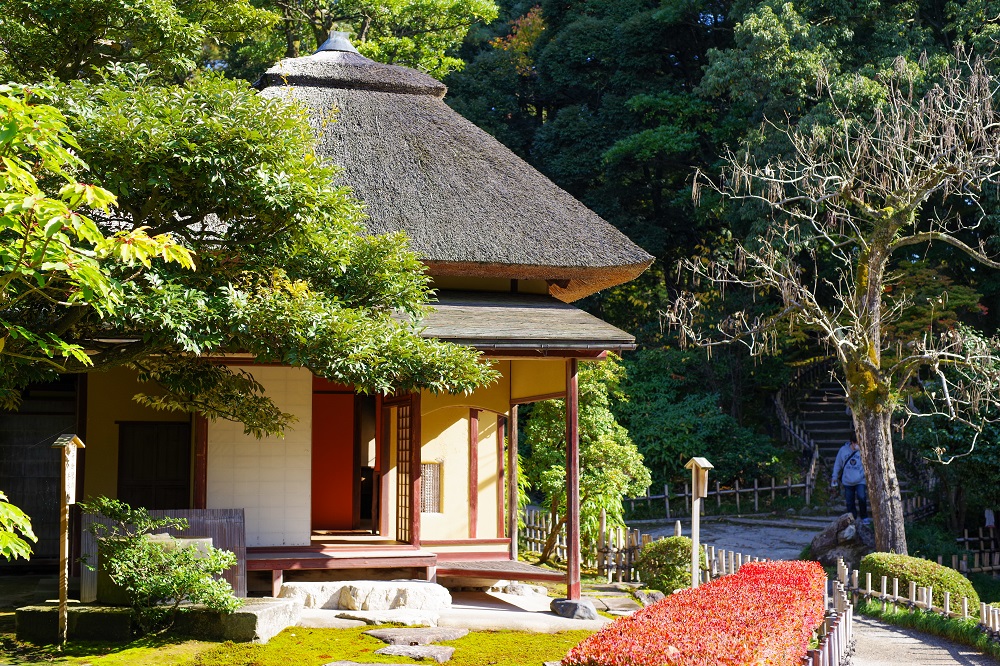
There are many restaurants and souvenir shops in Kenrokuen, where you can savor dishes unique to Ishikawa Prefecture, such as the local delicacy, jibu-ni (stewed vegetables), and soft-serve ice cream made with gold leaf. Visitors can also appreciate the beautiful scenery of the garden while enjoying authentic Japanese treats, such as green tea and dumplings. The "Kenroku dango" available at the Izuze Tea House in the center of the garden are homemade dumplings lovingly made using a method that has remained unchanged for 140 years. Relish the beautiful view of Kenrokuen while enjoying this dango among other sweet treats.
Getting there and around
Bus
■From Kanazawa Station, take the Hokuriku Railroad bus to Kenrokuen-shita bus stop (about 15 minutes).
■From Kanazawa Station, take the Hokuriku Railroad Kanazawa Castle Town Tour Bus to Kenrokuen-shita bus stop (about 15 minutes).
Taxi
Kenrokuen is around a 10-minute taxi ride from Kanazawa Station.
Top Tip
Kotoji Stone Lantern/徽軫灯籠(ことじとうろう)
Kotoji Stone Lantern can be found on the north bank of Kasumiga-ike Pond. This lantern is said to have gotten its name from the fact that it is held up by bilaterally-separated legs resembling the bridges that support the strings of a koto, a traditional Japanese instrument. Kotoji Stone Lantern and Kasumiga-ike Pond are often featured on TV and in magazines when introducing Kenrokuen, and the lantern has become a symbol of the tourist spot.

Kasumiga-ike Pond/霞ヶ池
Kasumiga-ike Pond is the largest pond in the garden, located almost at the center of Kenrokuen. Together with the Kotoji Stone Lantern and Karasaki Pine Tree surrounding the pond, it creates a picturesque scene. In autumn, the trees around the pond turn crimson and visitors can enjoy the vivid colors as hallmarks of the changing seasons. When the pond is lit up at night, the vibrant colors of the leaves are reflected on the surface of the water, creating a fantastic sight that is different from that of the daytime.
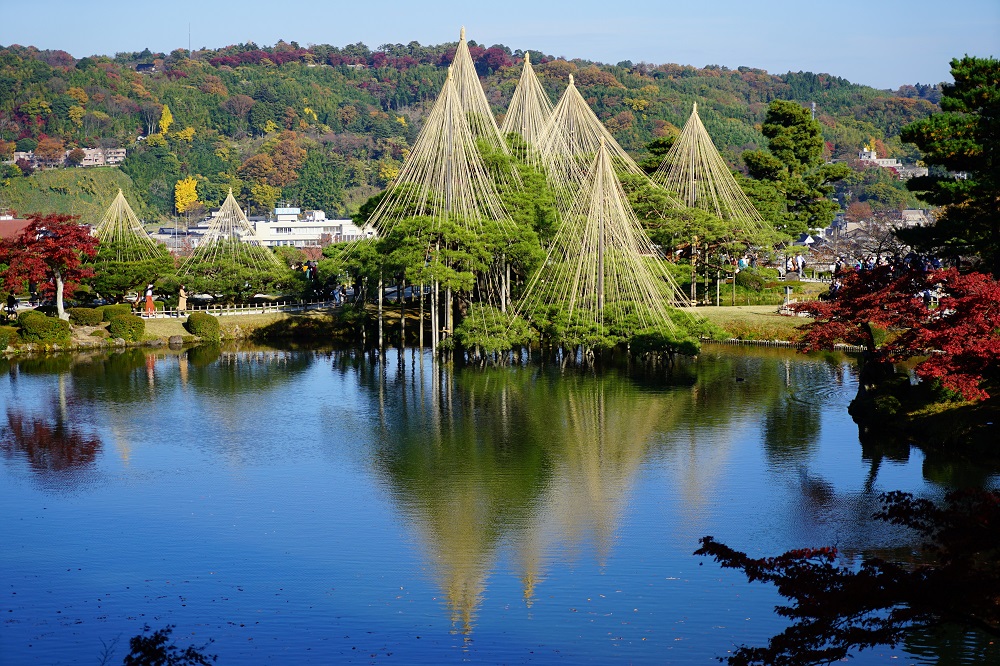
Hanami-Bashi/花見橋
Hanami-Bashi is a wooden bridge located in the southern part of Kenrokuen. It is said that the name "Hanami-Bashi" was inspired by the wonderful view of flowers visible from the bridge. In spring, the cherry trees around the bridge burst into full bloom, providing a breathtaking view from the bridge. While pictures of cherry blossoms taken from the bridge are nice, for an extra special snapshot, be sure to get a picture of Hanami-Bashi and the cherry blossoms together.

Shigure-tei Tea House/時雨亭
Shigure-tei Tea House is said to have originated from "Renchiochin," a pavilion built by Maeda Tsunanori, the fifth lord of the Kaga Clan, which had a vast territory known as "Kaga Hyakumangoku" in the Edo Period. Shigure-tei Tea House was demolished at the beginning of the Meiji Period (1868-1912), but reconstructed at its present location in the year 2000 based on an original drawing. Inside the pavilion is a tea ceremony room where visitors can enjoy Japanese sweets and tea while admiring the magnificent view of Hase-ike pond.
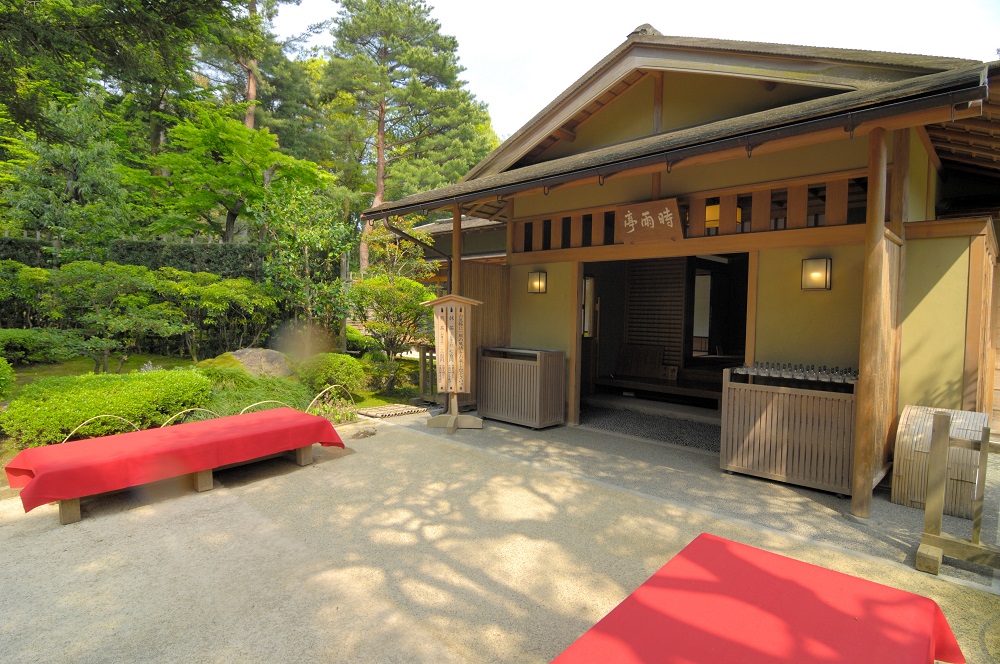
Light-up Event
Kenrokuen offers light-up events in spring, summer, fall, and winter. The elaborate seasonal lighting provides a wonderful spectacle that makes visitors want to visit Kenrokuen again and again. In the springtime, the cherry blossoms are illuminated at night; in summer, the pond and other water features are cool and refreshing; in fall, the Karasaki Pine Tree in its "Yuki-tsuri" state (Kenrokuen's symbol,) and autumn leaves; and in winter, the silvery-white snow-covered world are all set aglow with heartwarming lights.

Kanazawa Castle Park/金沢城公園
Kanazawa Castle Park was built on the site of the former Kanazawa Castle. In addition to "Ishikawa-mon Gate," "Sanjuken Nagaya," and "Tsurumaru Soko," which are designated as Important Cultural Properties, the recently restored "Hishi Yagura," "Gojikken Nagaya," "Hashizume-mon Tsuzuki-yagura," and "Kawakita-mon" are among the many highlights the park has to offer. Buildings designated as Important Cultural Properties can be seen only on special days, so visitors should check accessibility in advance.
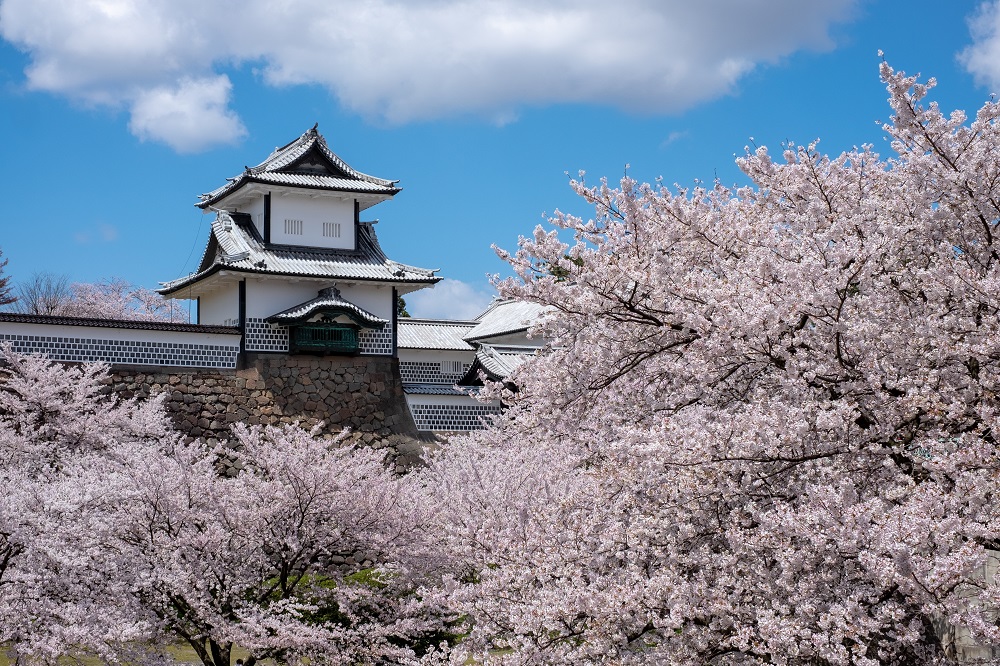
Travel Advice and Tips
Kenrokuen opens early in the morning at 5:00 a.m. in March, September, and October, 4:00 a.m. from April to August, and 6:00 a.m. from November to February. During these periods, visitors can enter the garden for free until 15 minutes before regular garden opening hours.
(Regular opening hours are 7:00 a.m. from March to October 15, and 8:00 a.m. from October 16 to February.) Early in the morning, the park is quiet and practically deserted, allowing visitors to enjoy a leisurely, peaceful stroll. During the early-morning free admission period, Kenrokuen is only accessible via Renchimon gate and Zuishiinzaka gate are open.
Accommodations
Kagaya/加賀屋(Ishikawa)
80 Yo-Bu, Wakura-Machi, Nanao-shi, Ishikawa
Established in September 1906, Kagaya was initially a modest inn with 12 rooms that could accommodate approximately 30 people. With 117 years of history, Kagaya is known as one of the largest luxury hot spring inns not only in the Wakura Onsen area, ....

